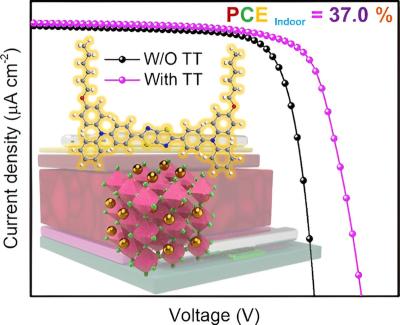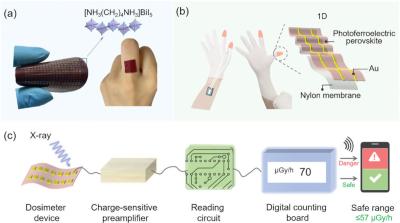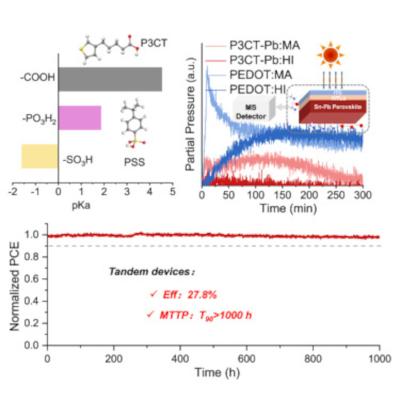Researchers use bridging molecules for more efficient perovskite solar cells
The interface between the perovskite layer and electron transporting layer has critical effect on the performance and stability of perovskite solar cells (PSCs). The heterogeneity of the interface critically affects the carrier dynamics at the buried interface.
To address this, researchers from Tsinghua University, Xiamen University, Chinese Academy of Sciences (CAS) and National Center for Nanoscience and Technology have developed a bridging molecule, (2-aminoethyl)phosphonic acid (AEP), for the modification of SnO2/perovskite buried interface in n–i–p structure PSCs.






